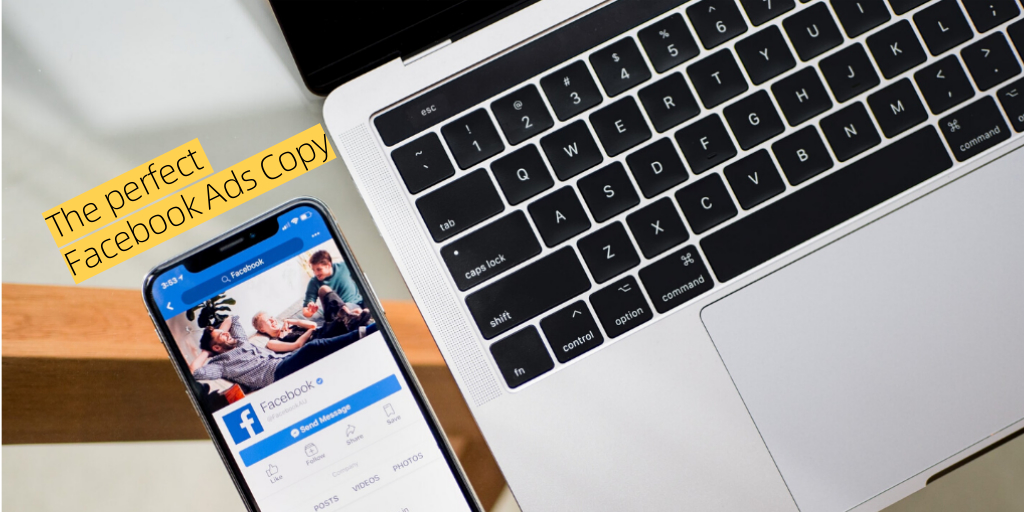How to Write the best Facebook Ads Copy

In 2019, Facebook changed its rules regarding ad copy and design.
The big news: Only three lines of text would be visible for consumers scrolling through ads on their mobile news feed. After that, they’d have to click a prompt to continue reading.
For this reason alone, writing the best Facebook ads copy from the get-go is imperative. In this article, we’re revealing a few short pointers on how to do that.
Let's dive in!
Text and Images go Hand in Hand
First things first, just because we're focusing on ad copy, doesn't mean your chosen image or video isn't important. Whatever you write has to relate to your creative. Yes, each of these elements tells their own stories, but they still need to complement each other. It’s no use pairing a solid creative with ineffectual copy - both are crucial to creating a high-converting Facebook ad.
The “Why”
Many consumers are on Facebook for an entirely different reason than to look at ads. So, you have a pretty steep hill to climb to entice someone to read your three visible lines.
Ask yourself: Why should they read about my product? What do you have to offer that's worth Facebook users pausing their scrolling to listen to what you have to say? Once you've got that nailed, you'll have a clearer focus for your ad.
Different Ads Suit Different Audiences
We’re going to assume you have some pretty strong data about your customers, their age, where they live, what they like doing, and how they spend their money.
That being the case, you can tailor your ads to suit different segments of your audience. By this, we mean tweaking the messaging and calls to action to appeal to your customers' diverse needs.
For each ad, you launch, have a customer avatar in mind and use this to fuel the content of your copy to appeal to their exact needs.
The Hook
Your hook is the first line of your Facebook ad copy, and there are three basic ways of writing one:
1. Feelings-based
2. Logic-based
3. Benefits-basedFeelings-Based
Imagine you sell hair products. Your hook could focus on your customer's hair looking so fabulous that all their friends compliment them on how wonderful they look. Your copy should focus on the “before” and “after” effect. 'Before you used this shampoo, your hair was… and after it was…' This plays on the reader's emotions, getting them to gauge how your product makes them feel when using it.
Logic-Based
Logic-based copy centers on evidence. Say, you’re selling footwear or mobile phone cases made from recycled plastic. An evidence-based statistic about how much plastic is in the ocean might be the hook you need to entice customers to read the rest of your ad copy.
Benefits-Based
Lastly, say you’re selling dog drying blankets. Your hook is the benefits consumers receive buying such a blanket - i.e., their dog isn’t going to trail mud/rain/water all over your car or home. That’s your hook!

The Opening
While we're on the subject of your 'hook', if possible, we suggest speaking directly to your audience somewhere within your opening.
For example, if you’re targeting mothers, you could craft personalized copy like “as the mom of two under 5s…” and so on. By honing in on your target audience, you encourage them to identify with your text and read past the first three lines - which is all the more important for longer-form ads.
Remember to arouse your audience’s curiosity too. This is easily achieved by identifying the specific problem your product solves, and zoning in on that. For example, you could ask a question like, “Rushed off your feet? Do you wish you could organize your time better?” or “Rushed off your feet? Do you wish your wardrobe looked great with minimum effort?” and so on.
It almost goes without saying, but if you decide to go with a question, be sure to answer it within your ad copy.
Drawing Someone In
Past your opening, your copy has to lead customers to a point where they're eventually presented with a call to action (see below). But first, you need to explain how you'll improve the consumer’s life with whatever it is you’re selling.
For example, if you sell garden furniture, you could draw someone in by explaining how they and their friends/family could sit outside for leisurely al fresco dinners.
What makes this glorious vision possible?
The answer: Your hand-crafted outdoor furniture set.
This is just one example - but you get the idea.
Call to Action (CTA)
You have a call to action button close to your ad image, but you'll need some CTA copy too. The most important thing to remember is, your call to action has to be short, sweet, to the point, and there should only be one.
For example: “shop today,” “find out more” or “for 20% off, shop now” and so on.
Included in your call to action could be a timeframe, using words like “today,” “now,” or, if you're running a promotion, “for one week only,” etc. Referring to time in your CTA creates a greater sense of urgency, which works wonders for converting impulse shoppers into paying customers.
Typical calls to action include:
-Watch more
-Learn more
-Shop now
-Book now
-Send message
-Contact us
Tone Down the Hype
Facebook users don’t like ads that use overly exaggerated language or are too pushy, “buy this” or “last chance.”
Also, keep your lingo relatable without being patronizing. Even if, for example, you’re selling software, describe it in simple terms: What is it, who is it for, how will it benefit the buyer, etc.?
Are You Ready to Start Writing the Best Facebook Ads Copy?
It isn’t easy to write the best Facebook ads copy. But, with some practice, you'll get there! Remember, your ad copy is the front door to your salesroom. It needs to be punchy, concise, persuasive, and speak to your audience - if you manage to achieve all of that, you'll start making sales in no time. Good luck!